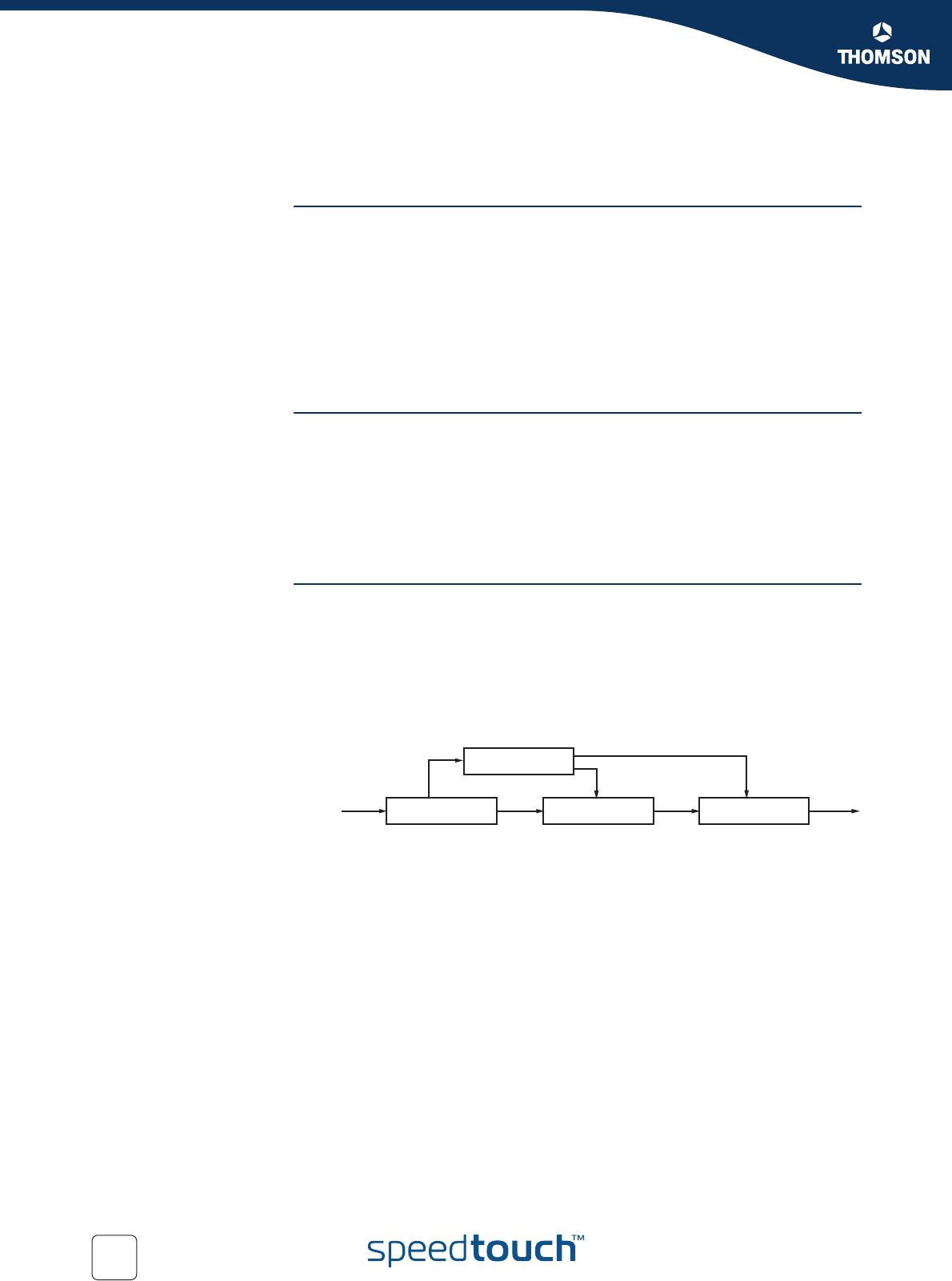
Chapter 3
Basic QoS Concepts
E-NIT-CTC-20041213-0013 v0.5
20
3.3 Classification and conditioning principles
Introduction Packets go through a number of phases as they transit the network: classification,
marking, shaping, policing and queuing. These phases can occur a number of times
at each QoS-aware router in the path of the packet.
For example, a host might mark outgoing traffic as "best effort", "scavenger",
"discard at edge" or "discard at paid link". The hosts router might then police the
host's traffic to ensure that these are the only markings applied to traffic, and remark
invalidly marked packets as "best effort".
The traffic conditioners are usually located in DiffServ boundary nodes, so interior
nodes do not need to perform any traffic conditioning.
Traffic classification A packet is classified as belonging to a "class of service". This classification is done
by the boundary nodes.
The BA classifier classifies the packets by the DSCP. Classification is based on the
value of combination of one or more IP header fields, such as source and destination
addresses, source and destination ports, protocol ID and other information like
incoming interface.
For example, we might classify data from a VoIP gateway as being "voice" traffic.
Traffic conditioning Traffic conditioning includes metering, policing, shaping and possibly re-marking to
ensure that the traffic stream entering the DiffServ domain conforms to the rules
specified in the SLS. The traffic conditioning policies are negotiated between the
networks and vary from simple re-marking to complex policing and shaping
operations.
The traffic conditioner includes meter, marker, shaper and dropper. The packets are
directed from the traffic classifier to the logical instance of traffic conditioner.
The figure above shows that the packets travel from the classifier either to the meter
or to the marker.
The meter measures the rate at which packets of one BA pass the meter. It is used
to measure the traffic stream against the traffic profile.
The marker adds the packet to the appropriate BA according to the DSCP. The DSCP
may be changed by the marker, i.e. re-marked.
Shapers shape the packet stream to fit in the used traffic profile. The shaper may
also act as a dropper by dropping packets to fit the stream into the profile.
packet
stream
shaper/dropper
classifier
meter
marker


















